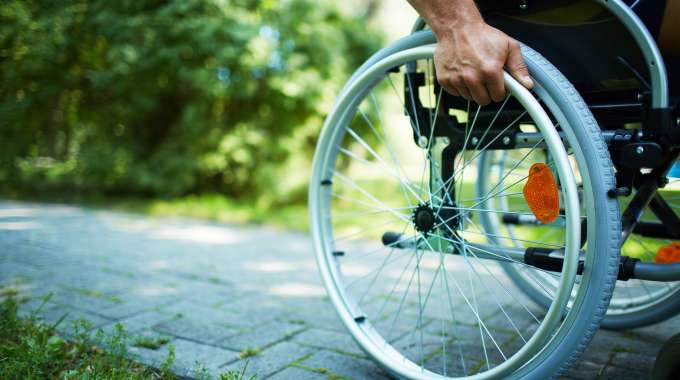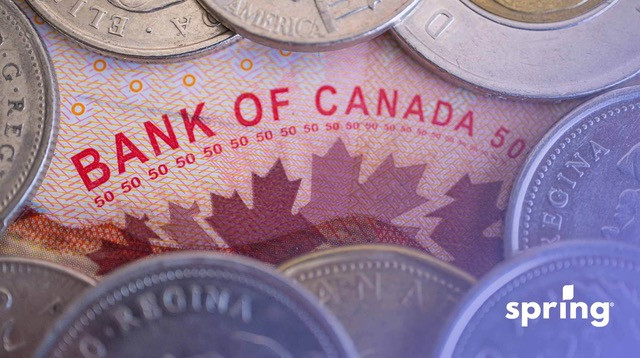Although not everyone will receive Canada Fed Deposit payments, a good majority of Canadians actually do. The reason that the deposits are called Canada Fed Deposits on your bank statement is that the Canada Revenue Agency is responsible not only for federal payments but also for some provincial payments.
Provincial payments from the federal government will be deposited under Canada Pro Deposit and include payments from the Alberta Child and Family Benefit and the Ontario Trillium Benefit (Northern Ontario Energy Credit, Ontario Sales Tax Credit and Ontario Energy and Property Tax Credit).
2026 Direct Deposit Dates
What date your Canada Fed payments get directly deposited into your bank account is based on which government benefits you’re receiving. With Canada Fed benefits, you can receive 5 different payments, which means that everyone’s Canada Fed Deposit amounts will be different. Also, you’ll notice that some of these payments are made monthly, while others are paid quarterly.
| Canada Child Benefits | Child Disability Benefits | GST/HST Tax Credit | Advance Canada Workers Benefits | |
| January | 20 | 15 | 5 | 12 |
| February | 20 | 19 | x | x |
| March | 20 | 19 | x | x |
| April | 20 | 16 | 2 | x |
| May | 20 | 21 | x | x |
| June | 19 | 18 | x | x |
| July | 20 | 20 | 3 | 10 |
| August | 20 | 20 | x | x |
| September | 18 | 17 | x | x |
| October | 20 | 15 | 5 | 9 |
| November | 20 | 19 | x | x |
| December | 11 | 17 | x | x |
Canada Fed Benefits
When it comes to Canada Fed benefits, there are different benefits that you can receive based on your financial situation as well as other defining factors of your life. Let’s take a look at the different benefits that you can receive and how they work.
Before we get too far into that, though, it’s important to remember that along with the Canada Fed Deposit listed on your bank statement, it can also be listed as EFT Credit Canada. Depending on the time of year as well, if you do not receive any of these different benefits from the federal government, it could be your income tax return or even an overpayment of income tax. This often explains why you receive a lump sum amount, or you may receive multiple benefits, which could also be deposited in a lump sum payment.
Canada Child Benefit
The Canada Child Benefit is a tax-free monthly payment that provides financial assistance to eligible families who have children under the age of 18. In order to receive these monthly payments, you must apply while providing proof of birth.
In order to be eligible for the CCB, you have to meet some eligibility criteria. These requirements are:
- You must be a resident of Canada for tax purposes
- You live with a child who’s under the age of 18
- You’re primarily responsible for your child
In order to be approved, you are your spouse must also be one of the following:
- A Canadian citizen
- A permanent resident
- A protected person
- An individual who’s registered or entitled to be registered under the Indian Act
- A temporary resident who’s lived in Canada for the previous 18 months and who has a valid permit in the 19th month
In order to receive the maximum benefit per month, your annual family net income must be under $37,487. Once your income is above the threshold, your government payments are reduced from the maximum amount.
Child Disability Benefit
The Child Disability Benefit is a benefit given to those who have a child or children under the age of 18 who have a severe and prolonged physical or mental impairment. There is no application required to receive this benefit, but you already have to be approved for the Canada Disability Tax Credit as well as the Canada Child Benefit. You should receive the monthly tax-free benefit at the same time as your CCB payments.
In order to receive the maximum benefit for each child, your annual family net income must be below $81,222. Once your income is greater, the benefit payment will then be reduced by how much your income is above the AFNI and how many children you have who are eligible for the benefit.
GST/HST Tax Credit
Whether or not you receive the GST/HST tax credit is based on your adjusted family net income and is meant for those who have a low or modest income. They’re tax-free payment amounts that you receive quarterly in order to help offset the cost of some of the Goods and Services Tax or Harmonized Sales Tax that you pay. These quarterly payments aren’t considered taxable income.
With the GST/HST payments, you don’t have to apply in order to receive them. If you’re eligible, you’ll start receiving your payments automatically. All you have to do to be considered is file your annual income taxes. However, there are some requirements that you need to meet.
- You must be at least 19 years of age
- You must be a Canadian resident for tax purposes the month before the CRA makes the payment, as well as the beginning of the month the payment is made
If you’re under the age of 19, you can be eligible to receive this benefit if you have a spouse or common-law partner or if you are (were) a parent who lives (lived) with your child.
Your annual family net income must be below the threshold to qualify. This threshold varies based on your marital status and how many children you have, but your AFNI must be below between $54,704 and $72,244.
Advance Canada Workers Benefit
The Canada Workers Benefit is another benefit that’s intended for low-income Canadians. This specific refundable tax credit is intended to help low-income workers and is made up of two parts: the basic amount and the disability supplement.
In order to be approved for the basic benefit, you need to meet a few requirements. These include:
- Being a resident of Canada throughout the year
- Being 19 years old or older by December 31, or living with your spouse or common-law partner or child
- Earning a working income and having an adjusted net income under the level set for your province or territory
You can receive the disability supplement as long as you meet the income requirements and are approved for the disability tax credit. For a single person, you’ll receive the maximum payment if your net income is below $26,149 and stop receiving payments once your income is greater than $36,749. For a family, you must earn below $29,833 to receive the maximum benefit and below $48,093 to continue receiving payments. It’s also important to remember that for those who live in Quebec, Nunavut and Alberta, the maximum benefit amounts will vary.
For the disability supplement, the income requirements vary. These are based on your marital status and whether or not you are receiving the disability tax credit.
Canada Carbon Rebate
The Canada Carbon Rebate, formally known as the Climate Action Incentive Payments, is a tax-free payment made to eligible Canadians to help offset federal pollution pricing costs. Along with the basic amount that you can receive, you can also receive a supplement if you live in small and rural communities.
In order to be approved for this payment, you have to live in one of the eligible provinces. These provinces include:
- Alberta
- Manitoba
- New Brunswick
- Newfoundland and Labrador
- Nova Scotia
- Ontario
- Prince Edward Island
- Saskatchewan
You must also be at least 19 years old the month before you start receiving these payments. If you aren’t 19, you must have (or had) a common-law partner or spouse or are (were) a parent who lives (lived) with their child. The last requirement is that your income has to be under the maximum income threshold, which varies from province to province.
Now that the federal government had decided to remove the fuel charge from Canada’s carbon pollution pricing system, they will no longer be giving out the Canada Carbon Rebate. You should have received the last payment on April 22 if you filed your 2024 tax return already. If you haven’t it will be processed once you do.
Canada Fed Benefit Amounts
The amounts that you can receive from the Canada Fed Benefit are also dependent on which benefit you’re receiving. While you may not receive the maximum amount available to you, here are the maximum amounts that you could receive.
| Canada Fed Benefit | Maximum Payment |
| Canada Child Benefit | For children under 6 -$7,997per year ($666.41 per month) For children 6-17 – $6,748 per year ($562.33 per month) |
| Child Disability Benefit | Up to $3,411 annually ($284.25 per month) |
| GST/HST Tax Credit | Up to $533 if you’re single Up to $698 if you’re married or common-law Up to $184 for each child under 19 |
| Advanced Canada Workers Benefit | Regular Benefits: $1,590 for singles $2,739 for families Disability Benefits: $821 for singles and families |
For the Canada Carbon Rebate, the amount you received was based on your province, so let’s take a look.
| Province | Maximum CCR Base Amount | Maximum CCR Rural Supplement |
| Alberta | $225 for an individual $112.50 for spouses $56.25 per child $112.50 for the first child of a single-parent |
$45 for an individual $22.50 for spouses $11.50 per child $22.50 for the first child of a single-parent |
| Manitoba | $150 for an individual $75 for spouses $37.50 per child $75 for the first child of a single-parent |
$30 for an individual $15 for spouses $7.50 per child $15 for the first child of a single-parent |
| New Brunswick | $95 for an individual $47.50 for spouses $23.75 per child $47.50 for the first child of a single-parent |
$19 for an individual $9.50 for spouses $4.75 per child $9.50 for the first child of a single-parent |
| Nova Scotia | $103 for an individual $51.50 for spouses $25.75 per child $51.50 for the first child of a single-parent |
$20.60 for an individual $10.30 for spouses $5.15 per child $10.30 for the first child of a single-parent |
| Newfoundland and Labrador | $149 for an individual $74.50 for spouses $37.25 per child $74.50 for the first child of a single-parent |
$29.80 for an individual$ 14.90 for spouses $7.45 per child $14.90 for the first child of a single-parent |
| Prince Edward Island | $110 for an individual $55 for spouses $27.50 per child $55 for the first child of a single-parent |
The rural supplement is included in the base amount. |
| Ontario | $140 for an individual $70 for spouses $35 per child$ 70 for the first child of a single-parent |
$28 for an individual $14 for spouses $7 per child $14 for the first child of a single-parent |
| Saskatchewan | $188 for an individual $94 for spouses $47 per child $94 for the first child of a single-parent |
$37.60 for an individual $18.80 for spouses $9.40 per child $18.80 for the first child of a single-parent |
Canada Fed Benefit Payment Increases
The current amounts for all of the Canada Fed Benefit payments are based on the 2024 tax year. You’ll notice a change in your payment amount from last year. This is because your annual net income will change, and there may be an increase in what the maximum benefit payments are. This is because all benefits are assessed on a benefit-year basis (July to July) instead of on a calendar-year basis.









